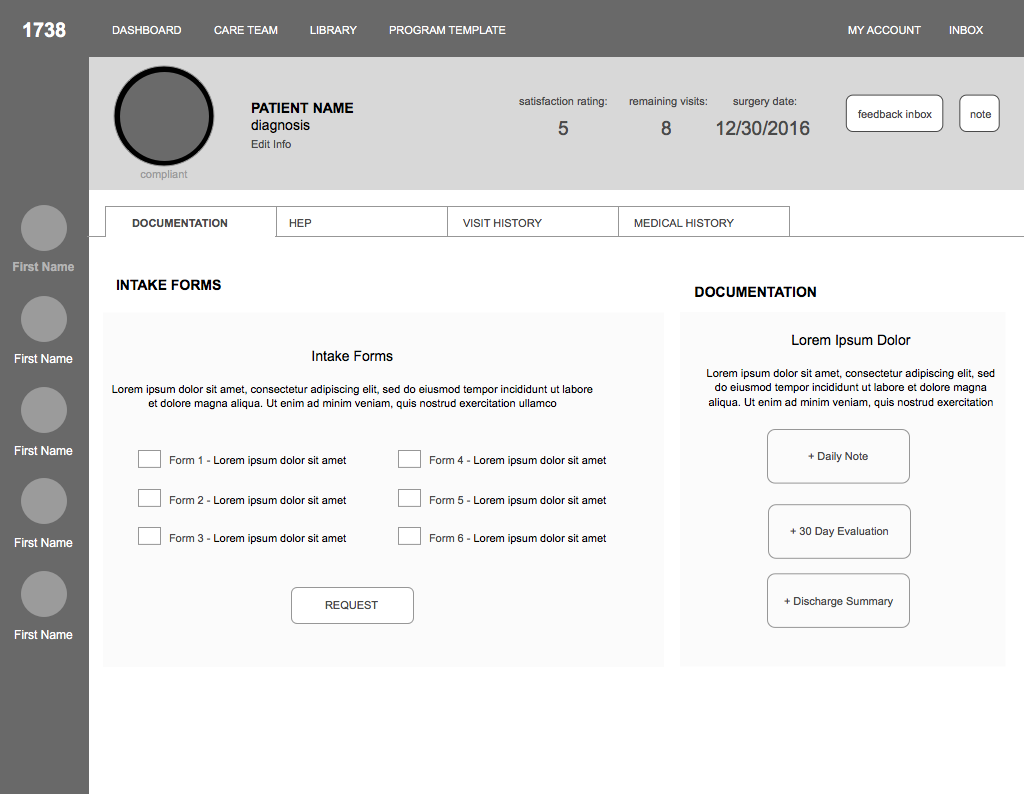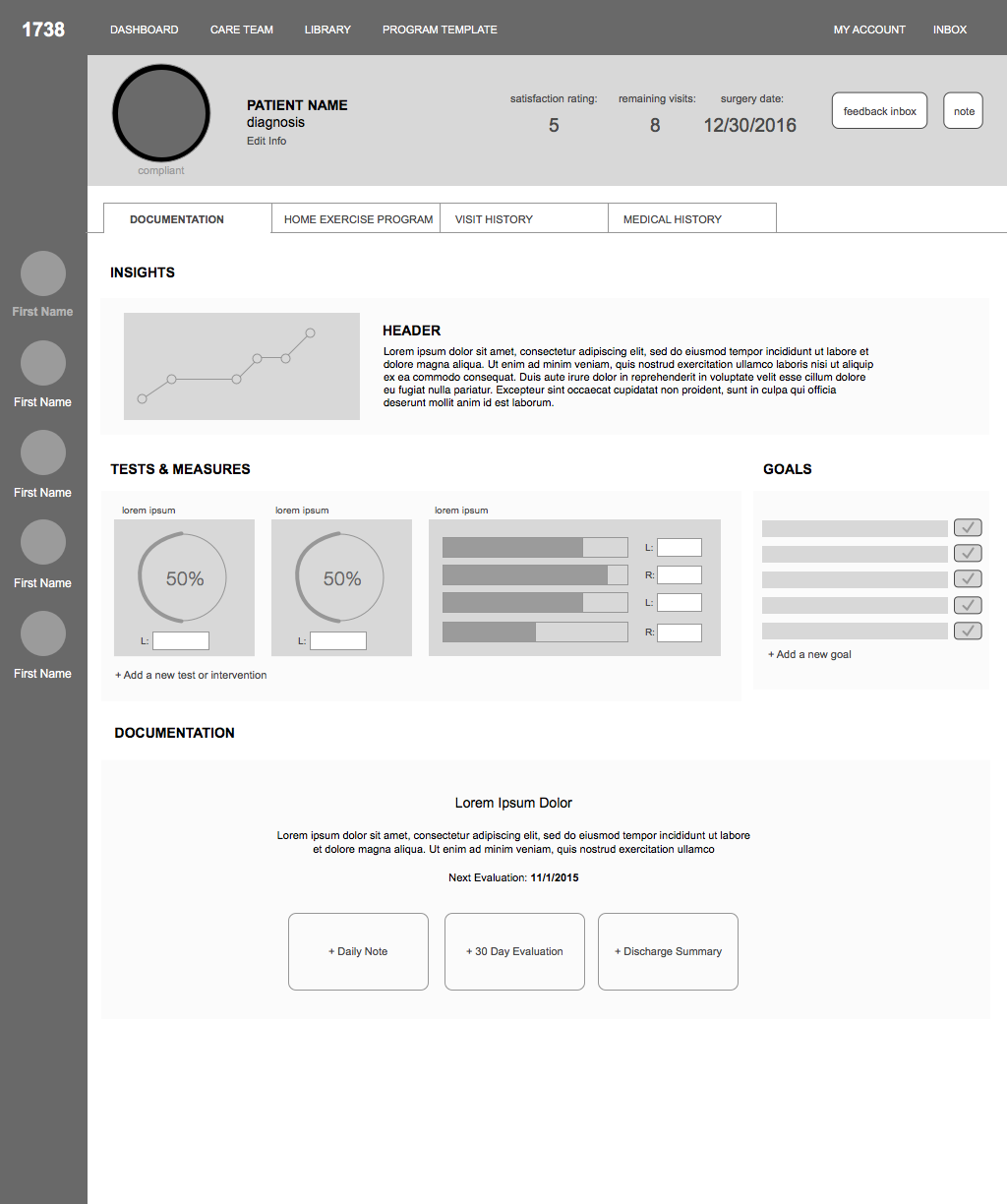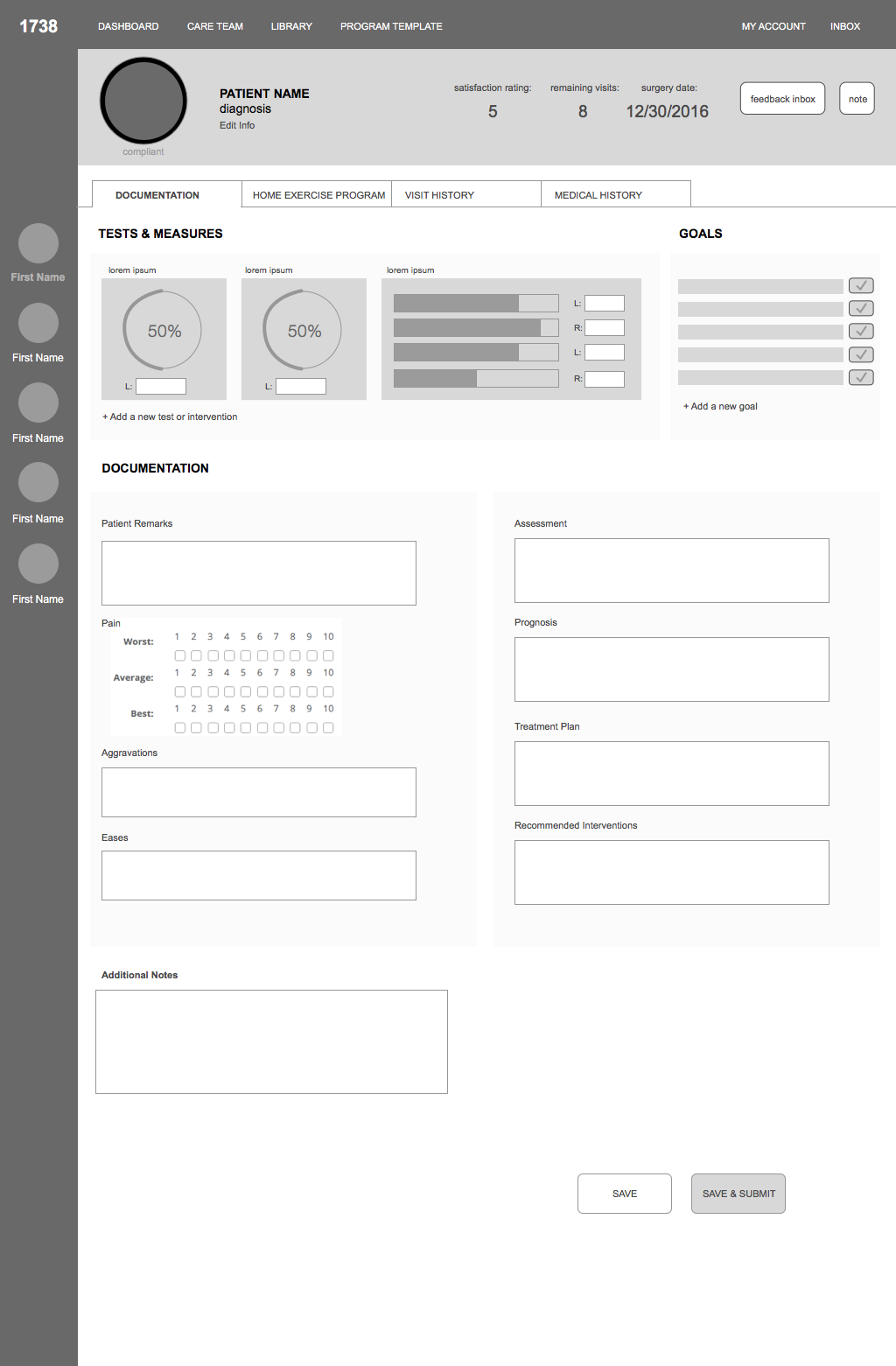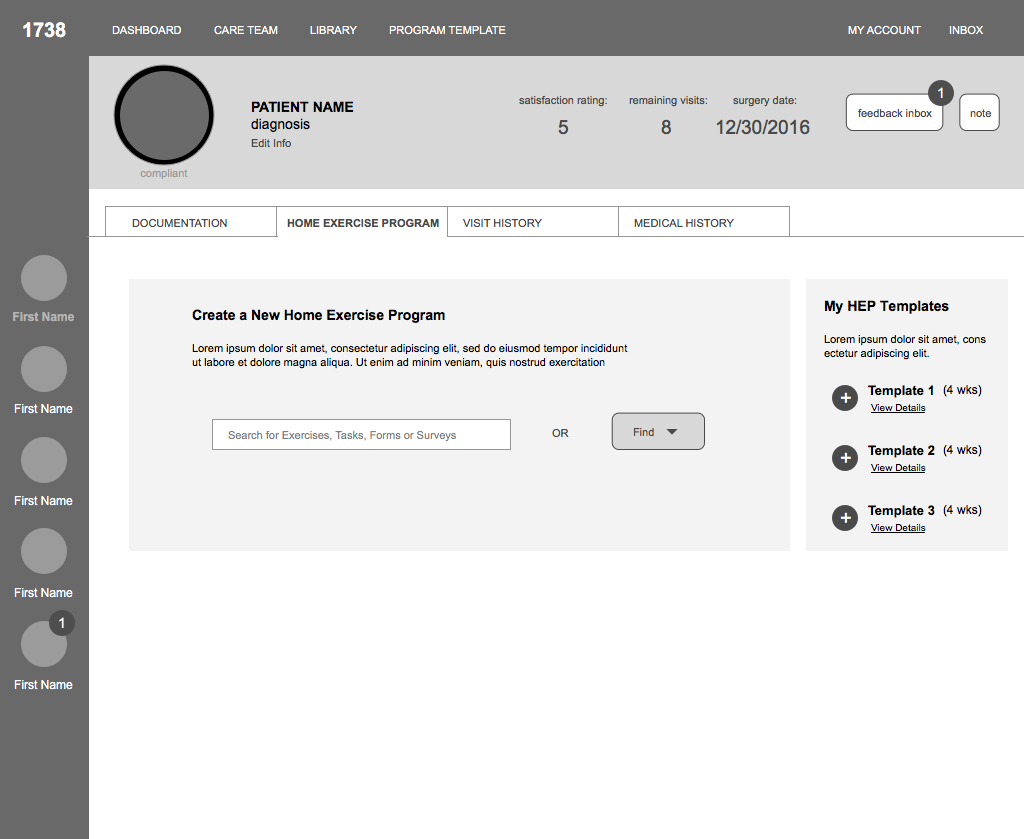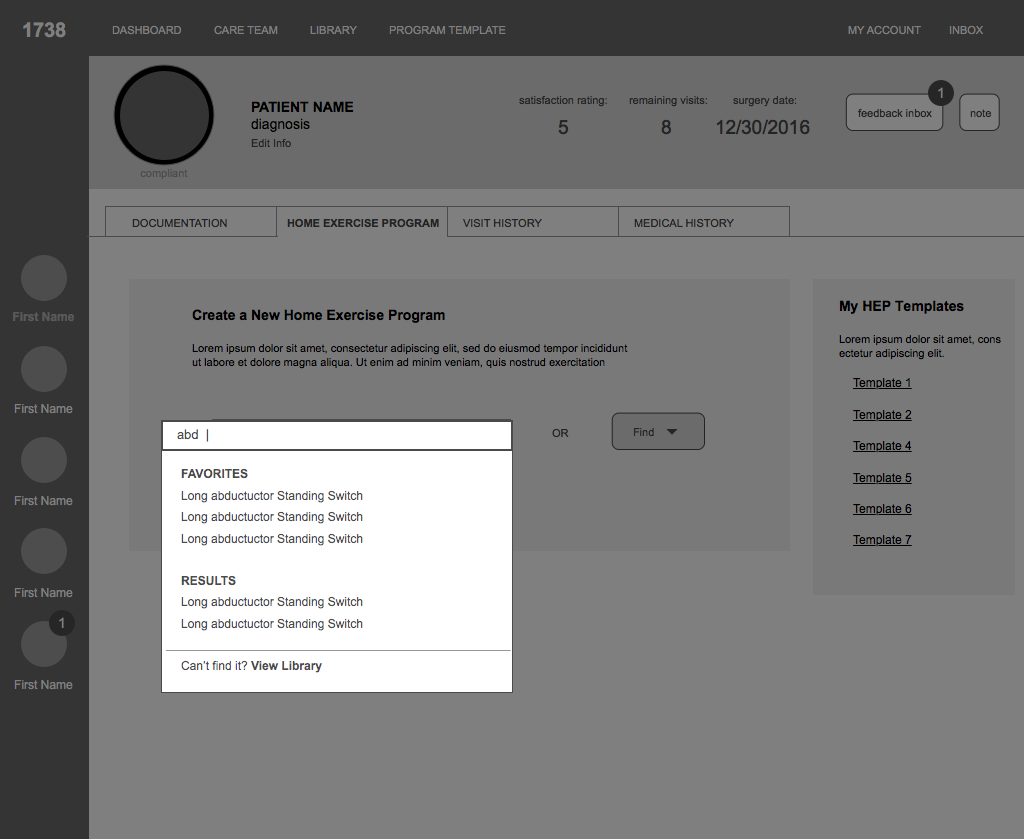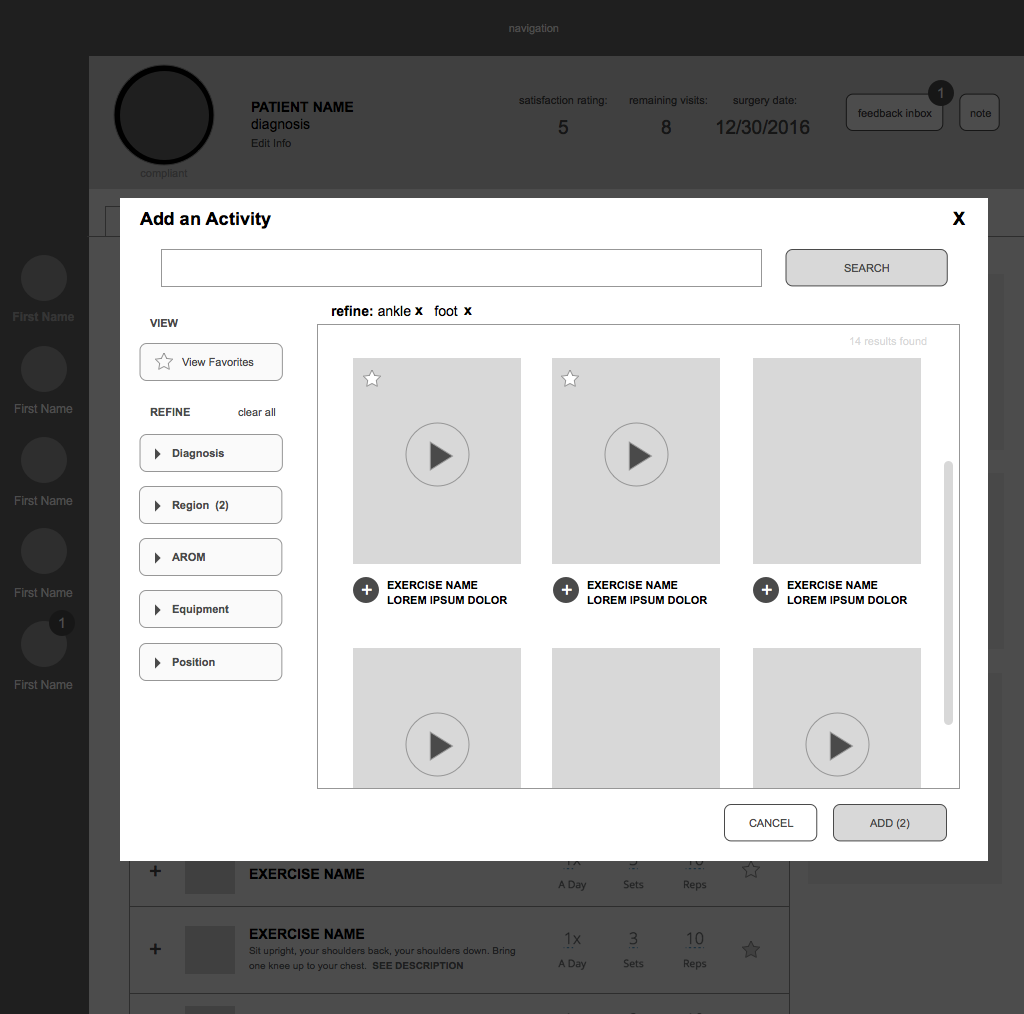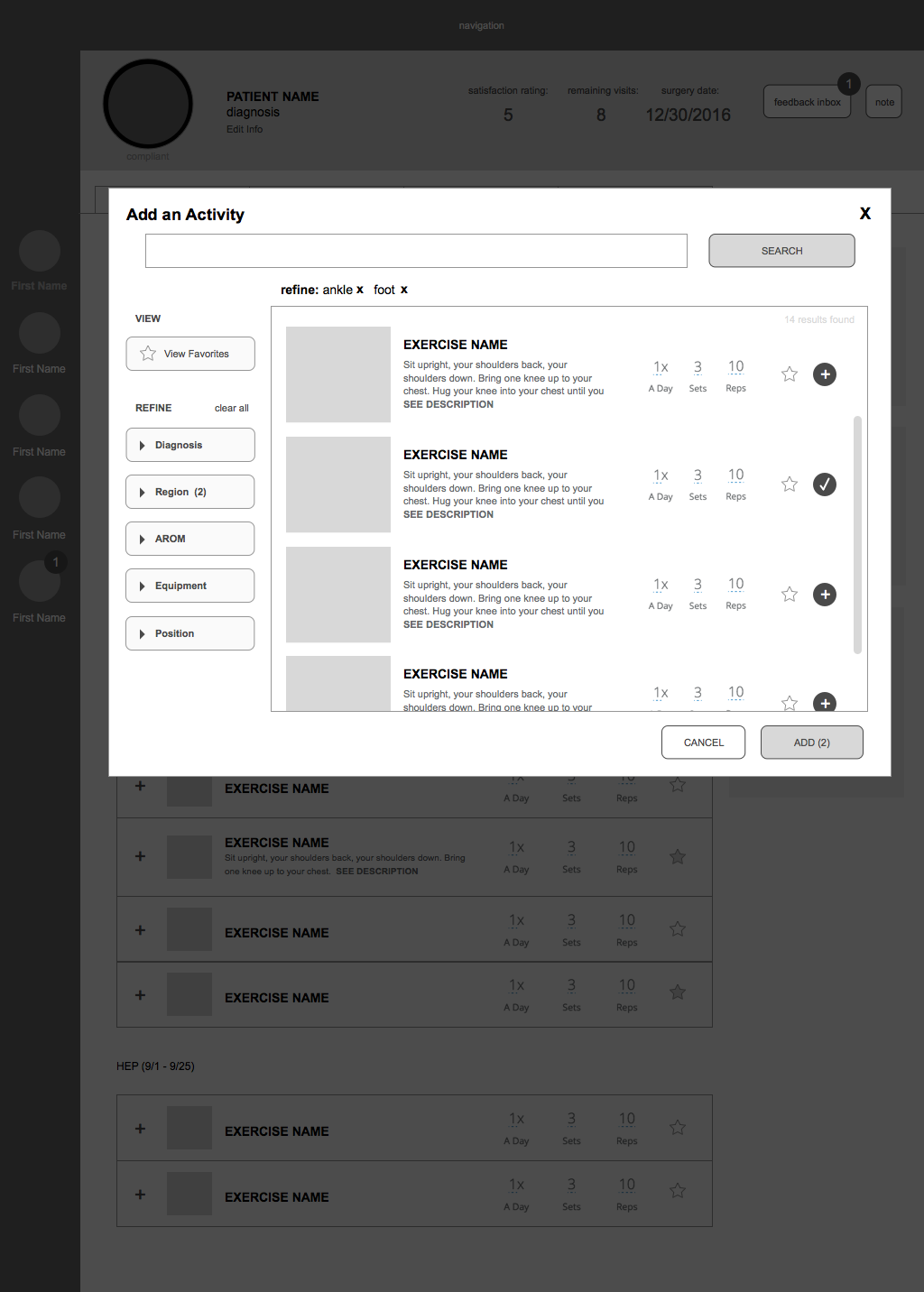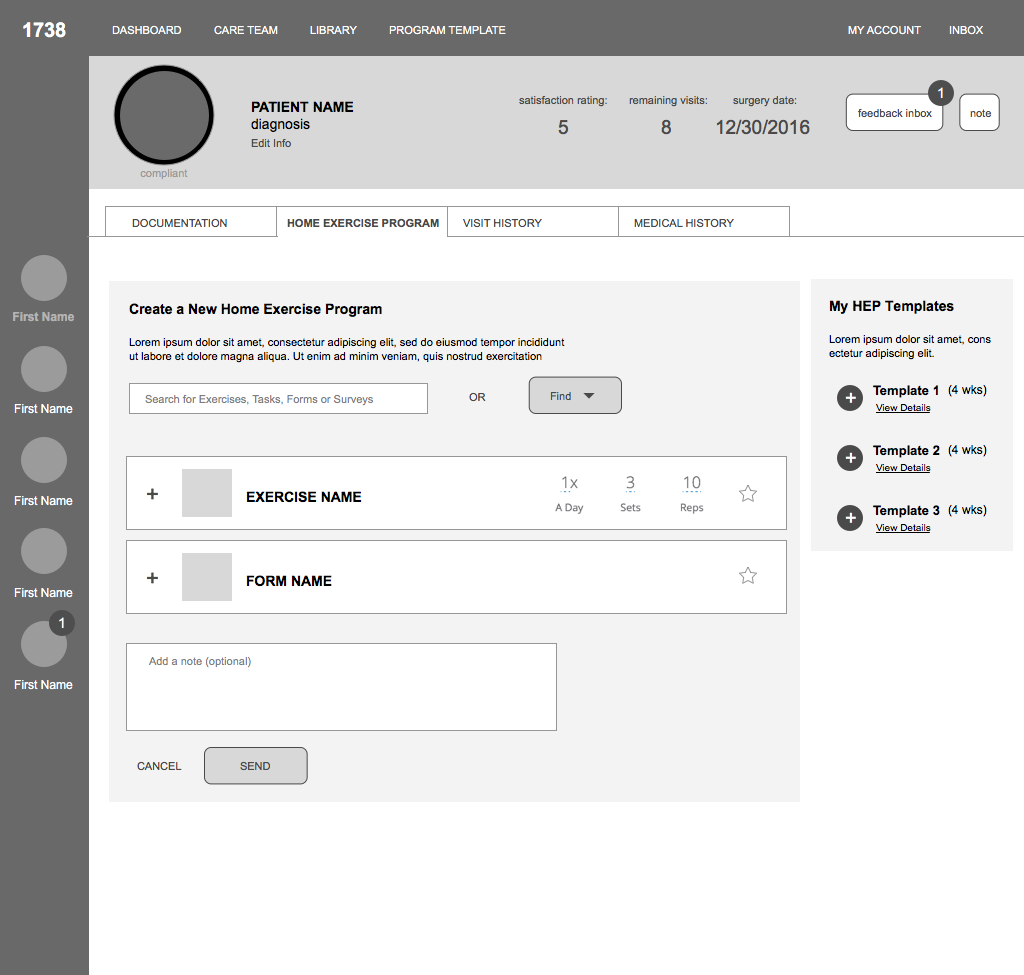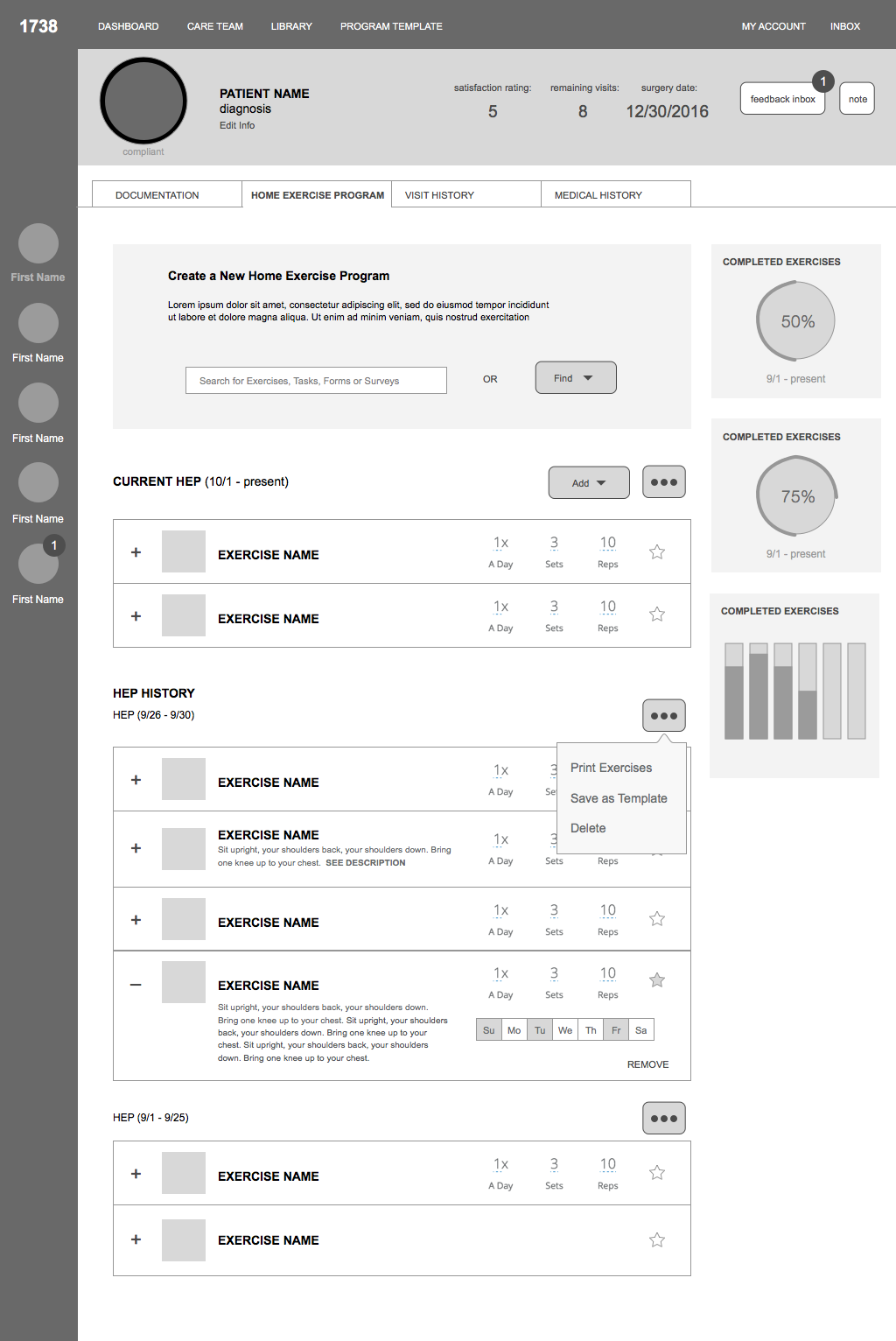
Keet Health
The goal: to redesign the interface for the documentation process to enable the physical therapist (PT) to spend more time with their patient and less time doing documentation.
Product Redesign
Research Insights
Conducted ethnographic research in Austin, Houston and Chicago. Key takeaways included:
PTs are highly relational and people-oriented.
PTs rely heavily on memory, and sort through old notes to find forgotten numbers/details when necessary.
PTs bounce between multiple patients (often seeing 4 patients within an hour time span).
PTs celebrate patient's progress – expressing their strong desire to get the patient back in action.
PTs often wait until after visit (or EOD) to document, dreading the time consuming process.
THE ZONES:
One of our primary goals for the physical therapist (PT) was to align the documentation process with their current flow. In other words, to design a system that they no longer have to conform to, but rather one that enriches the experience using technology to add value and remove unnecessary work for the PT.
The documentation process is consistently dreaded by each PT. Many systems have the documentation forms in a linear progression when in fact the PT's are bouncing around to different sections based on what the patient is communicating. Better utilizing the screen real estate we can accommodate these events by utilizing a two column grid.
Documentation Process
DESIGN HIGHLIGHT
Take a minute to write an introduction that is short, sweet, and to the point. If you sell something, use this space to describe it in detail and tell us why we should make a purchase. Tap into your creativity. You’ve got this.



